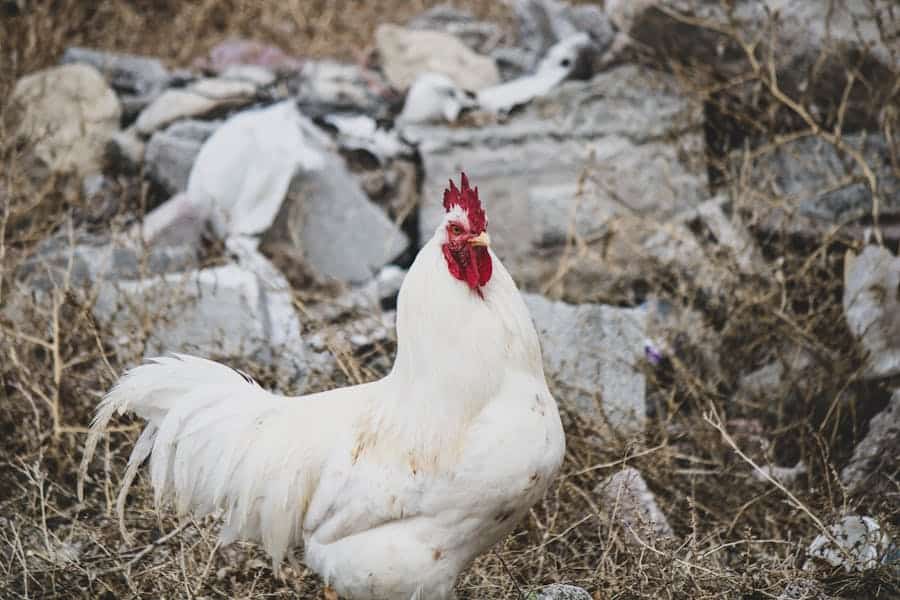 When you think of chickens, you probably imagine farmyards and domesticated birds pecking around for feed. However, the concept of wild chickens roaming freely might seem far-fetched to some. Surprisingly, there are indeed wild chickens in America. By exploring the fascinating journey of these birds from domestication to their wild counterparts, we can better understand the diverse avian life that thrives across the country. In this article, we will explore the history and origins of wild chickens in America, the regions they inhabit, their behavior and adaptations, and the ecological implications of their presence. By understanding these aspects, we can appreciate the resilience and adaptability of these birds and their role in the diverse avian landscape of America
When you think of chickens, you probably imagine farmyards and domesticated birds pecking around for feed. However, the concept of wild chickens roaming freely might seem far-fetched to some. Surprisingly, there are indeed wild chickens in America. By exploring the fascinating journey of these birds from domestication to their wild counterparts, we can better understand the diverse avian life that thrives across the country. In this article, we will explore the history and origins of wild chickens in America, the regions they inhabit, their behavior and adaptations, and the ecological implications of their presence. By understanding these aspects, we can appreciate the resilience and adaptability of these birds and their role in the diverse avian landscape of America
Are There Wild Chickens In America?
Yes, there are wild chickens in America. These birds, primarily feral descendants of domesticated chickens, can be found in various regions, particularly in Hawaii and parts of the southeastern United States. They have adapted to local environments, surviving independently and contributing to the ecological diversity.
History And Origins Of Wild Chickens In America
Wild chickens in America are primarily the descendants of domesticated chickens that have escaped or been released from captivity. The domestication of chickens dates back thousands of years, with their origins traced to Southeast Asia. Over time, chickens were brought to different parts of the world, including America, by explorers, traders, and settlers. Some chickens escaped or were intentionally released, leading to the establishment of feral populations.
In Hawaii, for example, wild chickens are descendants of birds brought by Polynesians around 800 years ago. These chickens, known as Red Junglefowl, interbred with domesticated chickens brought by later settlers, creating a unique feral population. The tropical climate of Hawaii provides an ideal environment for these birds, allowing them to thrive and multiply.
Similarly, in the southeastern United States, wild chickens have established populations in various states. These birds are often found in rural areas, where they can forage for food and find shelter in dense vegetation. The presence of wild chickens in these regions highlights the adaptability of these birds and their ability to survive without human intervention.
The journey of chickens from domestication to becoming wild illustrates the resilience of these birds. Over time, they have developed behaviors and adaptations that enable them to survive in the wild. Their ability to find food, avoid predators, and reproduce has allowed them to establish sustainable populations in different environments.
Habitat And Behavior Of Wild Chickens
1. Adaptation to Diverse Environments
Wild chickens in America have shown remarkable adaptability to various environments. In Hawaii, they thrive in tropical forests, coastal areas, and even urban settings. Their ability to find food in diverse habitats, from insects and seeds to human scraps, has contributed to their success. In the southeastern United States, wild chickens are often found in rural areas with dense vegetation that provides cover from predators.
2. Social Structure and Reproduction
Wild chickens exhibit social behaviors similar to their domesticated counterparts. They live in small groups, known as flocks, and establish social hierarchies. During the breeding season, males, known as roosters, compete for the attention of females, known as hens. Hens lay eggs in hidden nests, and the chicks are cared for by the mother until they are old enough to fend for themselves.
3. Survival Strategies
To survive in the wild, these chickens have developed various strategies. They are skilled foragers, capable of finding food in their environment. They also exhibit behaviors to avoid predators, such as roosting in trees at night and using camouflage to blend into their surroundings. These adaptations have allowed wild chickens to maintain populations in areas where food and shelter are available.
4. Interaction with Native Species
The presence of wild chickens in America has led to interactions with native species. In some cases, wild chickens compete with native birds for food and nesting sites. However, they also play a role in controlling insect populations and dispersing seeds, contributing to the ecological balance. Understanding these interactions is important for managing wild chicken populations and mitigating any negative impacts on native species.
5. Challenges and Threats
Despite their adaptability, wild chickens face various challenges and threats. Predation by larger animals, habitat loss due to urbanization, and competition with other species are some of the factors that affect their survival. Additionally, human activities, such as hunting and trapping, pose risks to wild chicken populations. Conservation efforts are needed to ensure the long-term survival of these birds in their natural habitats.
Ecological Impact Of Wild Chickens
Wild chickens have a significant ecological impact on the environments they inhabit. They play a role in controlling insect populations, as they feed on various insects and larvae. This natural pest control can benefit agricultural areas by reducing the need for chemical pesticides. Additionally, wild chickens contribute to seed dispersal through their foraging activities, helping to maintain plant diversity in their habitats.
However, the presence of wild chickens can also have negative effects. They may compete with native bird species for food and nesting sites, potentially impacting the populations of these native species. In some cases, wild chickens can cause damage to crops and gardens, leading to conflicts with human residents.
Managing the ecological impact of wild chickens requires a balanced approach that considers both their benefits and challenges. Conservation efforts should aim to preserve the natural behaviors and habitats of these birds while minimizing any negative interactions with native species and human activities. By understanding the ecological roles of wild chickens, we can better appreciate their contribution to the biodiversity of America.
Additional Information And Perspectives
Wild chickens in America represent a unique example of how domesticated animals can adapt and thrive in the wild. Their presence highlights the complex interactions between human activities and wildlife, as well as the resilience of animals in adapting to new environments. The study of wild chickens can provide valuable insights into the processes of domestication, adaptation, and survival.
In Hawaii, the cultural significance of wild chickens adds another layer of interest. These birds are not only a part of the natural landscape but also hold historical and cultural importance. They are often seen as a symbol of the islands’ heritage and a reminder of the Polynesian voyagers who first brought them to Hawaii.
Efforts to manage wild chicken populations should take into account both their ecological impact and cultural significance. Community involvement and education can play a crucial role in promoting coexistence between humans and wild chickens. By fostering an understanding of the importance of these birds, we can develop strategies that support both conservation and cultural preservation.
Conservation And Management Strategies
- Habitat Preservation: Preserving the natural habitats of wild chickens is crucial for their survival. Efforts should focus on protecting areas with dense vegetation that provide food and shelter for these birds. Conservation initiatives can help maintain the ecological balance and support sustainable wild chicken populations.
- Population Monitoring: Monitoring the populations of wild chickens can provide valuable data for conservation efforts. Regular surveys and studies can help track the numbers, distribution, and health of these birds. This information is essential for developing effective management strategies and addressing any emerging threats.
- Community Involvement: Engaging local communities in conservation efforts can foster a sense of responsibility and support for wild chickens. Education programs can raise awareness about the ecological and cultural significance of these birds. Community involvement can also contribute to the development of sustainable practices that minimize conflicts between humans and wild chickens.
- Research and Collaboration: Collaborative research efforts can enhance our understanding of wild chickens and their role in ecosystems. Partnerships between conservation organizations, researchers, and local communities can lead to innovative solutions for managing wild chicken populations. Sharing knowledge and resources can strengthen conservation initiatives and promote long-term sustainability.
- Policy Development: Developing policies that support the conservation of wild chickens is essential for their protection. Policies should address habitat preservation, population management, and the mitigation of threats. Government agencies, conservation organizations, and local stakeholders can work together to create and implement effective policies that ensure the survival of wild chickens in America.
Conclusion
The presence of wild chickens in America is a testament to the adaptability and resilience of these birds. From their origins as domesticated animals to their establishment as wild populations, wild chickens have carved out niches in various environments across the country. Their ability to thrive in diverse habitats, exhibit natural behaviors, and interact with native species highlights their ecological significance. Conservation efforts that focus on habitat preservation, population monitoring, community involvement, research, and policy development are essential for ensuring the long-term survival of these birds.
FAQs
Q. Are Wild Chickens Native To America?
A. No, wild chickens in America are primarily feral descendants of domesticated chickens brought by explorers, settlers, and traders.
Q. Where Can Wild Chickens Be Found In America?
A. Wild chickens are commonly found in Hawaii and parts of the southeastern United States, particularly in rural areas with dense vegetation.
Q. What Do Wild Chickens Eat?
A. Wild chickens are omnivores and feed on a variety of foods, including insects, seeds, fruits, and human scraps.








